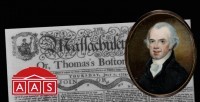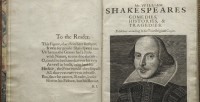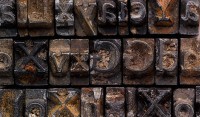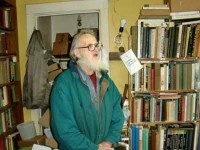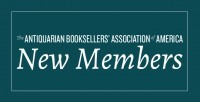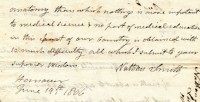Leah Dobrinska of ABAA member Books Tell You Why, Inc. discusses the founding of the American Antiquarian Society by revolutionary and pioneering printer Isaiah Thomas, and suggests some other organizations collectors should familiarize themselves with... Isaiah Thomas was a patriot and a printer. His work as a publisher antagonized the British presence in the colonies, and he was the first to proclaim the Declaration of Independence in the state of Massachusetts. Furthermore, Thomas' research on the printing process and his subsequent library of titles formed the basis for what is now the American Antiquarian Society (AAS), one of the major organizations dedicated to book collectors and history enthusiasts alike. Arguably, Thomas' legacy can be seen in both the AAS and in the other organizations which have taken up the torch of championing book collectors and their fervor for rare and authentic written works. During the Revolutionary War, Isaiah Thomas fought as a minuteman in the Battles of Lexington and Concord. At the same time, he used his position as the premiere printer in the colonies to fight the British cause with his issued works. Thomas published The Massachusetts Spy, a weekly magazine which supported the Whig cause and later George Washington and his federalist party. The British government tried to disband the paper, causing Thomas to move his headquarters from Boston to Worcester in 1775. It was there where he spent the remainder of his years as a printer, and... [more Isaiah Thomas and the American Antiquarian Society]
We round up interesting stories about the rare book world being discussed this week. Shakespeare's First Folios Go on Tour The Folger Shakespeare Library has anounced the cities that are getting a First Folio as part of their ambitious plan to put a copy of Shakespeare's First Folio on display in every state, Washington D.C., and Puerto Rico, in 2016. Read more to discover where your nearest First Folio will be... Preview Rare Book Week Look forward to Rare Book Week (which includes the 55th Annual New York Antiquarian Book Fair) with this preview from Rare Book Magazine. ILAB to Mark World Book Day The International League of Antiquarian Booksellers are planning a series of Pop-Up Book Fairs around the world to mark UNESCO World Book Day on April 23. Many ABAA members are involved in the US events. Ephemera Society Annual Conference The Ephemera Society Annual Conference is coming up. Mark your calendars for March 20-22, 2015. Documentary: Inside the Harvard Depository Harvard maintains a huge book depository that few ever get to visit. Curious collectors can now take a virtual step inside this hidden library in a new documentary, Cold Storage, a digital offshoot of the Library Beyond the Book project by Jeffrey T. Snapp and Matthew Battles. Read more... William Morris Library Project Reaches Half-Way Stage The project to digitally catalog the legendary library of book collector and publisher William Morris (of Kelmscott Press fame) has passed the half-way mark. Unknown Copy... [more Rare Book News]
Along with robins and daylight savings time, the Washington Antiquarian Book Fair is the harbinger of spring. In the old days, I'd drive down to the house of my friends who run Bartleby's Books, park my car in their driveway, and take a long, pleasant, shirtsleeved walk down Wisconsin Avenue to their shop in Georgetown, delighting in forsythias, daffodils, and short dresses along the way. But their shop has been closed for four years, and it's a good thing, too. Their business is thriving at home, and I would have needed skis to make the walk this year. As it was, finding our way across the Key Bridge to site of the book fair at the Holiday Inn in Roslyn, VA, was an arctic excursion, fraught with ice patches, snow banks and potholes. Promoter Beth Campbell and her helpful staff made move in a snap, but no one was too surprised that the line on opening night was shorter than usual. We'd just gotten several inches of snow – a blizzard in these parts – and DC officials were encouraging people to stay off the roads so that street cleaning could proceed. A word about Beth Campbell and the Washington Antiquarian Book Fair, if you will indulge me... The fair started as a fund raising event for Concord Hill School forty years ago. In its day it was, along with events in New York, Seattle, and St. Petersburg, one of the most successful provincial shows in the country. A bookseller could – and many did – make a decent living shuttling from one of these events to the next. All ... [more Frozen: Washington Antiquarian Book Fair]
The Petaluma Branch of the Sonoma County Library discovered that an "old and irreplaceable map has disappeared from collection". It is the 1852 'Map of Lands of Petaluma', and probably is the original plat map from the first survey of the settlement. The map is similar to this one held by UC Berkeley: http://content.cdlib.org/ark:/13030/hb8779p17c/ If you know its whereabouts, please contact Kate Keaton at kkeaton@sonoma.lib.ca.us. [more Missing: 1852 Map of Lands of Petaluma]
Measuring Your Social Media Success Whether you are just beginning your magical foray into the world of social media or have been tweeting for years, there comes a time when we all stop and wonder, “Is this thing on?” In other words, how can you tell if your posts are actually reaching anyone and generating more traffic to your website or just echoing back at you? For newbies and old hands alike, it is always a good idea to review your social media efforts to see what is working and where you can improve. Today we will consider some easy ways to get more mileage out of your daily posts and take a look at some powerful tools that can give you access to the data sets of your dreams... brace yourselves. Measuring your social media success can be as simple as becoming more mindful of your interactions with other users. One easy way to gauge your progress is to look at the number of engagements your posts are receiving. If you are on Facebook, are people consistently liking or commenting on your content? If you are more Twitter-inclined, are people re-tweeting your posts? Is there steady growth in the number of engagements and followers on your social media platforms or has that number been stagnant as of late? If your social media game needs a face-lift, here are a few tried and true methods to get back on track: 1. Use images. It is proven that posts that include visual material garner more likes, comments, and shares. Use this to your advantage. Not every post needs to incl... [more THE SAVVY BOOKSELLER: Social Media for the Antiquarian Book Trade, Post #7]
The recent news that typeface designer Robert Green -- who produced a digitized version of the classic Doves Type in 2013 -- had recovered over 150 of the original lead punches from the River Thames has caught the imagination of literary and rare-book circles, and spurred many articles on the Doves Press and the visionary book binder and printer Thomas Cobden-Sanderson. What was the Doves Press? In 1900, recovering-lawyer-turned-bookbinder Thomas Cobden-Sanderson founded the Doves Press in partnership with entrepreneur Emery Walker. Both men were part of the Arts & Crafts Movement associated with William Morris, who had earlier founded the Kelmscott Press -- for which Cobden-Sanderson did the binding. While the Kelmscott Press sought to produce the most beautiful and ornate books, the Doves Press strove for elegance and clarity. (I suspect that today, Cobden-Sanderson would design things for Apple). Philip C. Salmon of Bromer Booksellers says, “the thing that defines Cobden-Sanderson is the exacting nature of his craftsmanship, which is very evident in his bindings, and in the very precise nature of his page arrangements.” In pursuit of this clarity and elegance, Walker and Cobden-Sanderson designed a distinctive typeface, now known as “Doves,” in which all their books were set. Among the signature works of the Doves Press are the English Bible (1902-1905) and Paradise Lost (1902). (l) A page from Poems by Keats, Selected and Arranged by Thomas J. Cobden-Sanderson (Do... [more The Doves Press Story]
While in Ireland and out of the book world, I've been posting chapters from a story I'm working on. (See earlier entries on Bookman's Log.) The story is set in the town of Talman, a fictional iteration of Nyack, NY, one of the stops on my book route for decades. One of my favorite dealers in Nyack is Fred Rosselot, a lovely guy with a sharp mind and a sharper eye for books - with which he filled his house. This past weekend, Fred was severely injured in a fire which destroyed his house and his entire stock. For details go to Bookman's Log... Presumably the ABAA Benevolent Fund will be helping out as well. According to colleague Lorne Bair, "I've already forwarded Mr. Rosselot's devastating news to the Trustees, who will no doubt act appropriately." "Of course, there are many on this list who don't donate to the Benevolent Fund, but who might feel moved to donate to Mr. Rosselot directly. Where that's the case, it sounds like under the circumstances he can use every penny that comes his way." "I'll just take this opportunity to point out to all here how clearly this story illustrates the fact that many members of our fraternity/sorority lead a tenuous existence, one step away from disaster. The Benevolent Fund was established in understanding of, and as a partial antidote to, this reality. Give accordingly." "Nuff said. Good luck, Fred! [more Fred Rosselt Injured in House Fire]
The ABAA has recently approved several new members, all of whom have successfully proven themselves to be, in the words of the ABAA Guarantee "established, knowledgeable, and of excellent reputation." These new members were sponsored by existing members, and have undergone a rigorous screening process. We welcome the newest members of the ABAA. FULL MEMBERS: Sammy Blade Berk of Harlan J. Berk, Ltd. Sammy Berk is the head of the Harlan J. Berk, Ltd. Antique Map department. Harlan J. Berk, Ltd. is a family owned and operated business founded in 1964. Today we have a store front in the heart of downtown Chicago, with nearly 20 employees and specialize in a wide array of collectibles, including Ancient Coins, U.S. Coins and Currency, World Coins, Antiquities, Paintings, Antique Maps and Prints. Aside from becoming a new member of the ABAA and ILAB, we are also proud members of the Chicago and Washington Map Society. Harlan J. Berk Ltd. is also the sole organizer of the Chicago International Map Fair, which is held in October. For more information of the map fair, please visit the fair website at www.chicagomapfair.com. Mark Brumberg of Boomerang Booksellers, Northampton, MA Mark started Boomerang Booksellers in 2010 to connect serious readers and collectors with the fine books they cherish and love. Boomerang Booksellers specializes in illustrated books, fine printing, children's books, modern first editions, signed books, & poetry, along with a general selection of antiquarian b... [more New Members: February 2015]
UPDATE (2/19/15): MATERIAL RECOVERED Missing in transit, shipped from San Francisco via US Priority Mail on 2/2/2015, a copy of the Matisse Verve, this copy missing approx. three inches of the binding at the head of the spine. If you are offered this copy or otherwise encounter it, please contact Michael S. Hollander (ABAA) in San Rafael, California, by phone at (415) 572-4224 or mshollbks@gmail.com. [more Missing in Transit: Matisse Verve]
“Nothing is more important to medical science & no part of medical education in this part of the country is obtained with so much difficulty” as the study of anatomy with the use of cadavers. So wrote Dr. Nathan Smith to New Hampshire Governor John Langdon in June 1806. One of the leading medical practitioners and educators of early 19th century America, Smith founded or helped establish four schools of medicine in New England, including those at Dartmouth, Yale, Bowdoin, and the University of Vermont. In the United States, cadavers for anatomy classes were difficult to come by – legally – until at least the 1830s. Anatomical dissection of the human body was viewed with deep suspicion, if not revulsion, especially in New England's clergy-dominated culture. In the early decades of the Republic, traffic in human remains remained largely an underground enterprise involving physicians and body snatchers (or “resurrectionists,” as they were known). Exceptions to the rule might be made, usually in the case of executed criminals whose bodies might be either sold by a creditor or released by the state – which provides the context of Smith's letter. The Nathan Smith letter, page 1 Several weeks before Smith wrote to the Governor, a New Hampshire man named Josiah Burnham had been sentenced to death for the brutal murders of two others. During his sixty-plus years of life, Burnham had worked variously as a whaler, a successful surveyor, and a landowner before becoming invo... [more The Doctor, the Murderer, and the Governor]


